When your lower back is not functioning or is unstable, your whole life feels unstable. You don’t have the strength to face it.
I have suffered from back issues since I was very young. I remember the first time my lower back went “out.” I was 18 years old and felt as if my body had suddenly become old and useless.
From a yogic perspective, lower back issues affect us at our first chakra. This chakra governs our relationship to our survival. When our survival is threatened, we become unsettled and agitated. We are (literally) unable to focus on our daily duties and sometimes become quite useless.
A few years after hurting my back the first time, I started to invest myself further into my yoga practice. And I found relief in my back issues. It would feel better and then get worse. Eventually, I got into a style of yoga practice called Ashtanga yoga. Each time I started my practice, my back felt tense, tight, and in pain. At the end of my practice, I found relief. My back would crack into place and then I was fine for about the next 20 hours. And then I needed to do it all over again.
What I did not realize at the time is that yoga does not necessarily help your lower back issues.
In fact, speaking somewhat generally, yoga postures can make your lower back issues even worse.
This was the case for me.
And here is why.
1. Yoga can easily cause disc compression.
Two of the main directions in which we move in yoga postures are forwards and backwards. Specifically, in the case of moving forward, we can easily cause posterior disc compression. And in some cases, many people have experienced what is known as posterior “slipped discs.” When we are not extending the spine, we are creating the opportunity for posterior or anterior disc compression. Instead of working on stability and elongation, people sacrifice the integrity of the poses to go “deeper”.
Read more about the 8 Benefits of Muscle Activation Techniques In Yoga!
2. Many yoga postures actually weaken major and minor muscles groups.
This point is going to piss off some people because yoga is supposed to have these great effects on the body and transform the mind. And it does. Yoga postures help to create a deep parasympathetic response in the body while tonifying and strengthening your sympathetic system. You can develop access to the central and autonomic nervous system while learning how to control the chaotic mind bringing one-pointedness and clarity. Many of the yoga postures which twist and open stimulate and improve digestion. Deep and dynamic twists squeeze the internal organs while pumping waste to our respective dumping sites.
So how do some yoga postures weaken muscles groups?
The practice of stretching.
To stretch or not to stretch, that is the question.
Something you don’t hear enough is how much stretching actually weakens muscles.
Why?
Here is the simple answer.
Think of your muscles like a computer. The computer is functioning well. It is doing its job. And then you stretch it. You turn off the computer. Stretching literally turns the muscle off. How does the computer/muscles turn back on? The “how” is the subject below. But suffice it to say, the muscles sometimes don’t turn on for long periods of time, and the older we are, the longer it takes to fire them back up again.
Now the more complicated answer.
According to Stephen Gangemi,
“The thought that stretching relaxes and is therapeutic for tight muscles is not only a misconception, it has never been proven. It actually weakens muscles… Muscle tightness is due to an imbalance. The imbalance lies within the neuromuscular system – so it is a reflection of the nervous system via the muscular system…
“There is a neuromuscular inhibitory response to static stretching,” Malachy McHugh, the director of research at the Nicholas Institute of Sports Medicine and Athletic Trauma at Lenox Hill Hospital in New York City, told the New York Times. “The straining muscle becomes less responsive and stays weakened for up to 30 minutes after stretching, which is not how an athlete wants to begin a workout.”
(As I said earlier, the older we get, those 30 minutes actually become hours.)
A study was done at the Department of Kinesiology at the University of Texas that compared changes in muscles that were stretched and not stretched in the same person. They found that stretching one muscle can also impair another muscle that was not stretched, possibly through a central nervous system inhibitory mechanism. That means that stretching (and weakening) a muscle in your left leg could weaken a muscle in your right leg that you didn’t even stretch!
Other studies show adverse effects on lower limb power, sprinting ability, and vertical jump. These abnormal changes induced in a stretched muscle can last for an hour or longer, and some clinicians have demonstrated that stretching can cause prolonged muscle problems that can last days and weeks.
So should you stretch at all? Should I stretch my lower back?
In my opinion, no.
We find that time and time again that stretching actually leads to more instability.
As a trained Muscle Activation Teachnique™ specialist, I ALWAYS find that muscle function disappears the moment we stretch.
Usually, pain in the body happens due to a lack of proper muscle function.
We all can agree that range of motion is important. But how much does one need? That is an important question to ask. But in the meantime, if muscles are not able to contract properly, more problems will ensue over time.
Bottom line? The absolute wrong thing to do when you have back pain is to stretch the back muscles. No matter how good it feels.(And it does feel good!) Stretching your back muscles will exacerbate the problem and if done incorrectly, could actually lead to severe disc compression.
What a lot of people do not realize is that muscular pain is often a sign that there is an imbalance in the muscular system. A set of muscles somewhere else in your body are overworking or underworking. They are overworking because the muscles that should be working are not firing up. The muscles in pain have often been recruited by the muscles that are not working because they are asleep. They are like computer. Turned off. And what do you do? What is your intuitive instinct? To stretch those muscles out, and by default, stretch out the muscles that also need to be fired up. Thereby exacerbating the issue even further.
But how do these muscles shut down? Where did the problem start?
That is a complicated question that would demand a long answer digging into your physiological history. I suggest you find a really good physiotherapist. But for now, the very very very short answer?
Sitting.
Sitting is killing us. We sit way too much.
When you sit for more than 25 mins, your entire pelvic floor starts to shut off. It goes to sleep. And if your pelvic floor and glutes go to sleep, then your body begins to recruit other muscles to do the work for them. And thus you experience problems.
(Read more in this NPR article.)
One little solution for the sitting problem? Get a desk you can stand at.
How do I help my lower back problems?
First and foremost, get some X-rays and MRI’s. And then take those to a really good physical therapist to help you to trace the issues in your body so you can, at the very least, begin to correct the issue in the muscular system.
And give it some time. Learning about your body and how to heal it from experiencing further pain coupled with the aging effect makes this process lifelong. If you are really lazy and want instant results, start taking pain medication and hope for the best. If you want a body that will serve you for the rest of your life and keep you mobile, you need to give it time.
Get Started Now! Don’t wait!
You don’t have to wait to start taking care of your back. To help you get started, here are some simple exercises for your lower back.
Hamstrings
Okay I know I said that stretching is not good. But I also said you do need to increase your range of motion. I have found time and time again that tight hamstrings play a big role in people’s lower back issues. Big time!
But pay attention. The way to stretch them is very specific, safe. This is the technique recommended by many physiotherapists.
When most people think about stretching their hamstrings, they think about either standing and then folding forward over their legs, or sitting and then folding forward over their legs.
But the BEST and SAFEST way to stretch your hamstrings is to lie on your back. Bend one leg with the foot resting on the ground, and straighten the other leg bringing it to 90 degrees.
No, if you cannot get the leg to 90 degrees, then you will have to work on that. If you are so flexible that the leg can come more than 90 degrees, don’t.
First of all, you do not need to develop more range of motion. And second of all, keeping the leg at 90 degrees will actually help to stabilize the entire pelvic floor.
This is a nice pose to stay in for one minute on each leg. If your range of motion is limited and your tight hamstrings are contributing to your back issues, work up to staying here for four minutes.
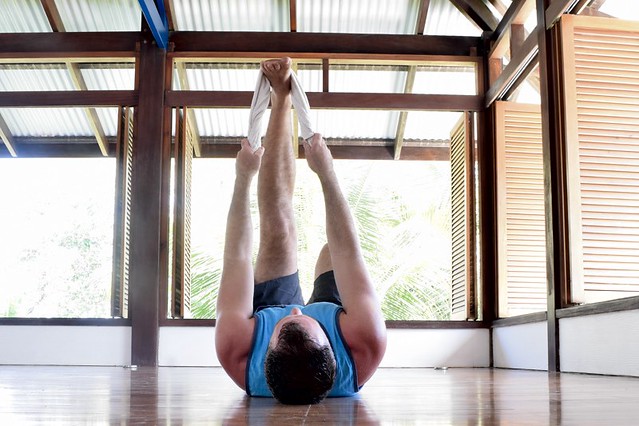
Another great stretch to open the lower back and glutes is this hip opener. Again, this is a nice pose to stay in for one minute on each leg. If your range of motion is limited and your tight hamstrings are contributing to your back issues, work up to staying here for four minutes.

Psoas and Iliacus
The psoas and iliacus are often referred to together as the iliopsoas. They are really funny muscles to work with. On the one hand, they need to stretch and relax. But on the other hand, if they are too relaxed, then they do not function at all and thus are the cause of other muscles becoming strained.
As quoted,
“The iliopsoas muscle is one of the most complex muscles in the body. When it becomes dysfunctional (either excessively short and tight or overstretched and strained) it can be the source of a bewildering variety of mysterious and hard-to-diagnose pain.”
The first thing is to stretch it. There are not very many good ways to stretch the iliopsoas, but a simple runners’ stretch is probably among the best.
My suggestion is to stay here for 30 seconds, ease off, and then deepen into it for another 30 seconds.
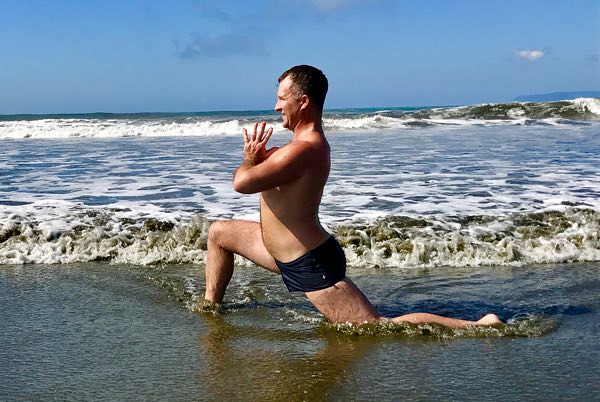
Then after stretch these two muscles, you should work on firing them back up.
This simple exercise will not only activate your iliopsoas, but will also fire up all of your hip flexors as well.
(Sorry no photo so pay attention!)
1. Lie on your back.
2. With your legs straightened on the floor, squeeze them together. (Feel your abductors and inner groins firing.)
3. Turn your toes outward as much as you can. (Like a ballerina plie.) You will notice that your legs will want to separate. Keep squeezing them as you do this.
4. Now lift your legs up off the floor about four inches while your toes are turned out. Again, you will notice that your legs will want to separate. Keep squeezing them as you do this.
5. Stay here for 10 seconds and then come down and rest for 10 seconds.
6. Repeat three times.
In other words, lie on your back and lift your legs 4 inches off the floor while squeezing them together while turning the toes out.
As you get better at this, you will want to stay up longer. Try to work on keeping your legs up for 30 seconds.
Glutes
The majority of people’s back issues (and even neck issues as well as those in the lower extremities) stem from the glutes. There are two really great exercises to help them activate and build up strength.
1. Bridge pose
A very simple pose to do, you can almost do this anywhere and it takes very little time to do it.
Come on to your back with your legs bent, feet resting on the floor. Bring your feet as close as you can to your buttocks. Bring your hands over your head. And then lift your hips toward the sky as high as you can.
You can do one of the following two exercises.
1. Lift the hips up for 10 seconds and squeeze your glutes. (Count one one thousand, two one thousand, three one thousand… all the way to 10) and then bring the hips back down. Repeat for a total of three times.
2. Lift the hips up as high as you can while squeezing the glutes and then lowering them back down. Repeat 10 more times.
After doing this exercise every day for one week, you will notice your back problems will have either left or have drastically decreased.
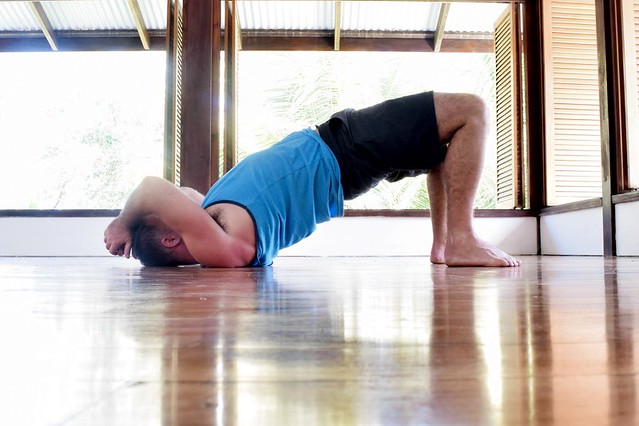
2. One-Legged Locust Pose.
This one-legged locust pose is a GREAT compliment to bridge pose. Simply lie on your stomach, bend one knee, and lift that foot up toward the ceiling as high as you can. Hold for 10 seconds, and then do the other leg. Repeat for a total of two or three times.

Back Muscles
It is so important to keep your back muscles toned and strong. Sadly, so much of what you do in your life inherently weakens them and shuts them off. Here are some muscles and exercises to pay attention to.
Multifidus
One major muscle group that NEVER gets any press is the Multifidus.
The multifidus muscle consists of a number of fleshy and tendinous fasciculi, which fill up the groove on either side of the spinous processes of the vertebrae, from the sacrum to the axis. While very thin, the multifidus muscle plays an important role in stabilizing the joints within the spine.
Located just superficially to the spine itself, the multifidus muscle spans three joint segments and works to stabilize these joints at each level.
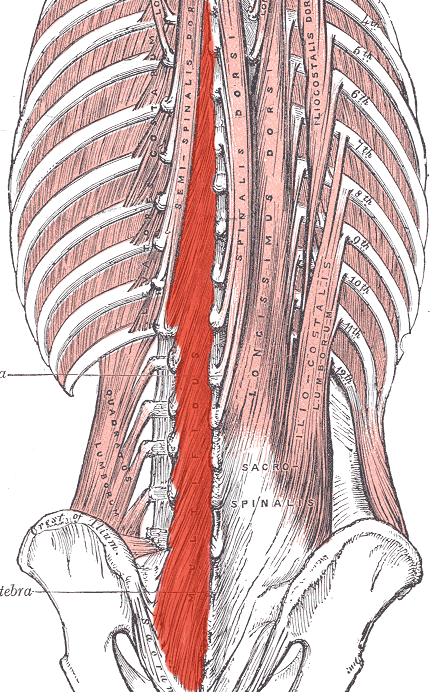
When you exercise the multifidus, you will bring more stability to your back, and especially your neck. If I start to have a lot of neck pain, I go back to doing this exercise and after three days, my neck pain is gone.
To my knowledge, there are very few exercises that directly affect the multifidus. The one I was taught is depicted below.
- Come on to all fours.
- Begin by lifting one of your back legs up.
- Keep the leg as straight as possible.
- Lift the opposite arm up as high as you can while keeping it straight.
- Keeping the arm straight, the leg straight, lift both up as high as you can again.
- Now twist your entire upper torso in the direction of the raised arm.
- Lower arm and leg, and repeat on the other side.
- Do this exercise 10 times on each side. If you have really bad back issues, do more.

Lower Back Muscles
There are many muscles in the lower back that can cause a lot of problems if they are not:
a. Firing properly.
b. Strengthened.
It is really important to keep these muscles toned and strong. Anytime you are sitting for long stretches and especially hunched over your computer screen, these muscles will be shut down and not support your back correctly.
One of the BEST corrective poses you can do that is 100% safe is often referred to as locust pose.
Lie face down on the floor. Lift one arm, your head, chest/upper torso, and the opposite leg up as high as you can while squeezing the glute of your lifted leg, and then slowly lower down. Repeat on the other side.
Do both sides five times. Take your time as you do this. Go slowly and see how much height you can get in your torso as you lift up.
You will notice and feel all of your lower back muscles contracting.
If you are new to this exercise, it will take you some time to strengthen your muscles. But over time, you will notice that you will not have any lower back pain.
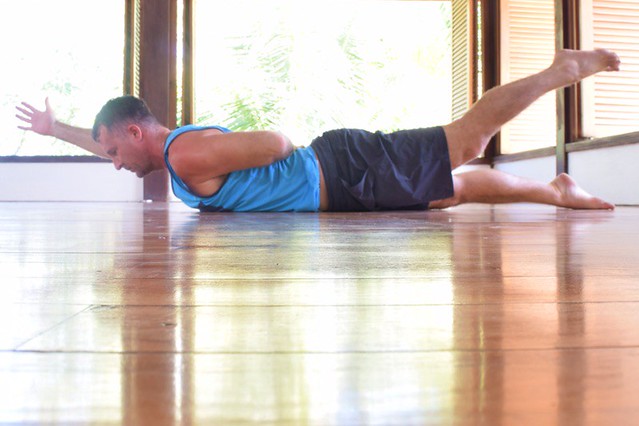
Abs
Any program would not be complete without addressing the abs. Contrary to popular belief, they are NOT the most important set of muscles to work on. All of the muscles listed above are probably more important. But you should address them.
The following exercise is the one I have been taught to do. I try to hold this version of plank pose for 30 to 60 seconds. As I do this pose, I try to feel my naval pulling into my spine while lifting my chest forward and pressing back through my heels.
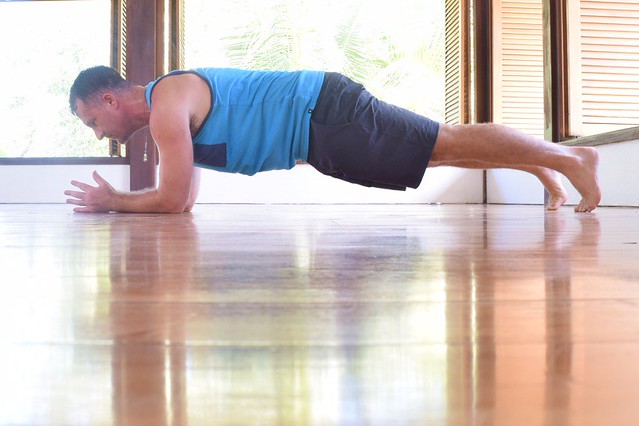
If you suffer from pain in your lower back, you can work with yourself to lessen it, or eliminate it together.
Do not give up hope. Work to seek out answers to your questions. Find healers who are knowledgeable in autonomy and physiology. Instead of finding a standard massage therapist, I would strongly suggest finding a good physiologist who can work with the mechanics of your body and improve on some of the techniques I have listed above.
And most of all, don’t keep stretching as a way to eliminate your pain. It might feel good for now, but without properly activating and strengthening certain muscles, you will never create the stability of the body you are looking for.
A stable body leads to a stable life. A stable life leads to peace of mind and energy to work on the more important things of your life.
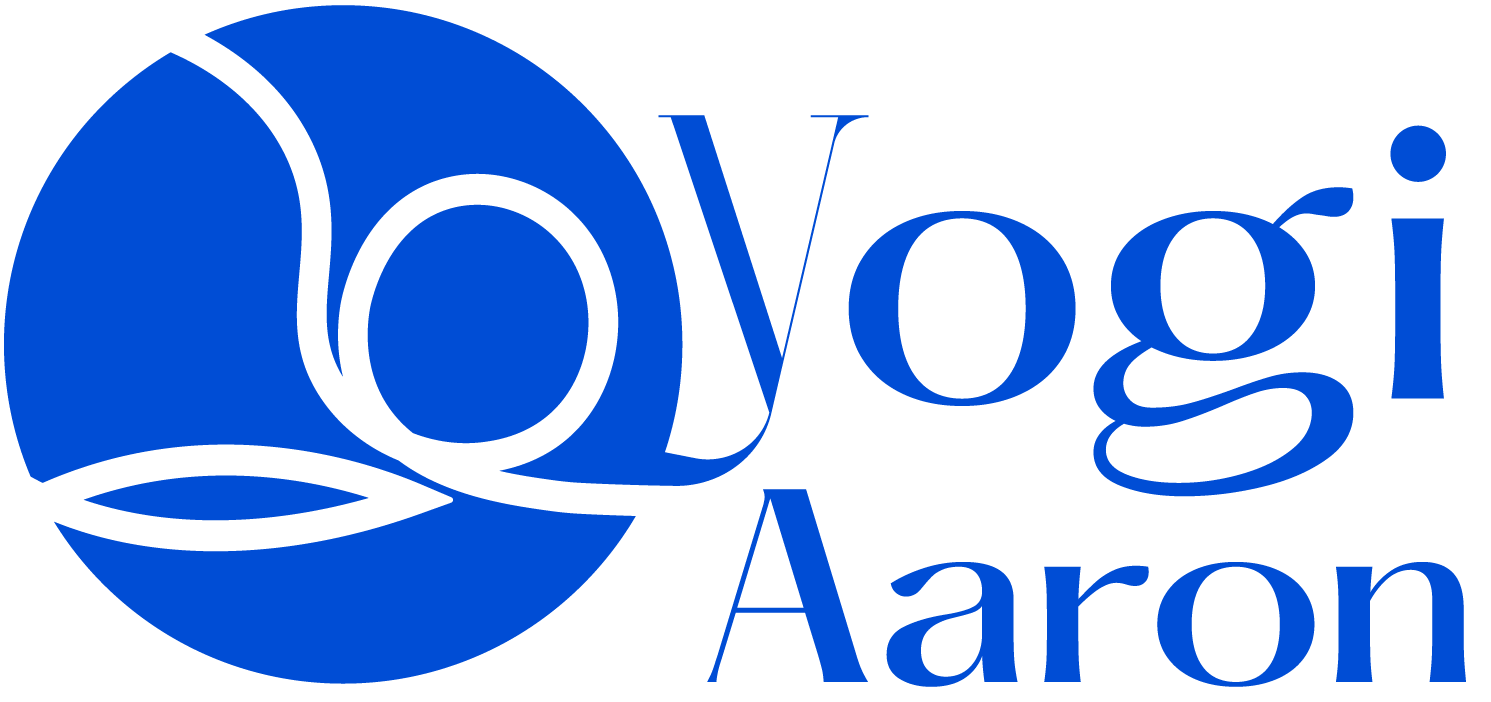
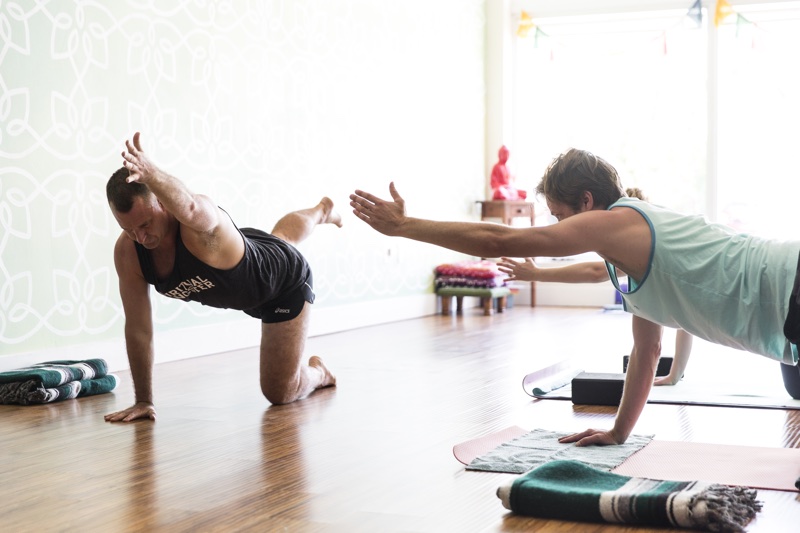
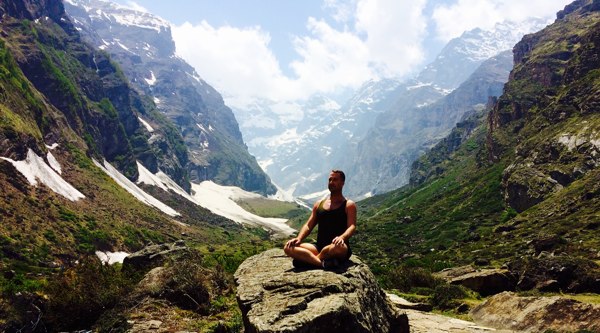
Aaron taught us the essence of this in an amazing workshop this afternoon. Words cannot describe how this feels, during and -even as important- after. Time flew and we all felt both energised and relaxed.
Do try this at home!
Excellent post! We are linking to this great post on our website.
Keep up the great writing.